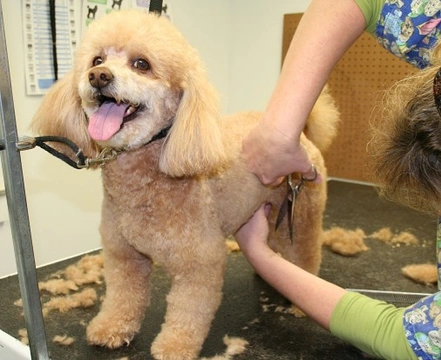
Caring for curly coated, low-shedding dogs
Dogs with very densely curled, low-shedding coats are becoming ever more popular today, as people find that they are easier to take care of than some other breeds that constantly shed hair around the home. Added to this, they are also incredibly popular as the shed hair, being tangled within the coat and not dropped in great quantities, means that they may not trigger allergies in people who are generally prone to them. This is a very sweeping statement, however, and not necessarily entirely true.
Regardless of the reason though, curly coated, low-shedding dogs are more popular today than ever, and many people are enthusiastic about them as pets. So, if you own a Poodle, Bichon Frise, Labradoodle or any other low-shedding dog, read on for some tips on caring for both their coats and skin.
What types of breeds are curly coated and low shedding?
A wide variety of breeds of dog have tightly curled coats that do not tend to drop a lot of hair around the house, and while not all of them are related to the ever-popular Poodle, many of them are! Some of the more common breeds that you might come across that fall under this heading include:
- Bichon Frise
- Irish Water Spaniel
- Portuguese Water Spaniel
- Kerry Blue Terrier
- Barbet
- Miniature Poodle
- Toy Poodle
- Standard Poodle
- Labradoodle
- Cockerpoo
Coat care and maintenance
People often assume that a dog that does not shed hair in great quantities and does not moult much has a very easy-care coat that is best left alone, but in reality, dogs of these types require daily coat care, regular grooming and the occasional bath too! Shed hair remains entangled within the rest of the coat naturally, and this can of course lead to matted hair, knots, and itchy, irritated skin.
If you are not sure how to care for your dog’s coat in the best possible way or are considering buying one of the breeds mentioned above, read on to learn more about how to keep their coats and skin in tip-top condition.
Brushing and combing
It is a good idea to give your dog a five minutes brush over once or twice a day, and get them into the routine of accepting this and actively enjoying it. It is much easier to prevent knots and problems from developing than to have to sort them out after the event, and spending a short amount of time every day caring for your dog’s coat, and tackling particularly common areas of matting such as behind the ears and on the chest, will save you a lot of work later on.
Use a tool such as a tangle teaser or a slicker brush on your dog’s coat, and use a comb gently and carefully to ensure that you get right down to the roots of the hair, and do not simply brush over the top layer.
Detangling
If you do find that your dog gets matted or knotted up or picks up burrs, grass seeds, thistles and other tangley vegetation in their coats, you will have to sit down with them and work on removing the associated knots and mats! Always start from the edges of any matting or knotted area and work in towards the centre, rather than trying to poke a comb into the middle of the lump and pull it apart!
The longer that you leave a tangled area before attacking it, the worse it will get, so deal with the problem as soon as it arises!
Bathing
Dogs of all types can get a little pongy from time to time, and this means that they will need to take a dunk in the bath! It is important not to over-bathe your dog, as this can strip the essential oils from their coat and make their skin dry, but bathing them every six to eight weeks is fine, and will help to work the shed, loose hair out of their coats.
Use a gentle shampoo and conditioner or detangler, and take the opportunity to brush and comb out their coats at the same time, cleaning right down to the skin to sweep away dead skin cells, before rinsing and thoroughly drying the dog.
Clipping
Many owners of dogs such as the Poodle or the Bichon Frise take their dogs to be professionally groomed on a regular basis, and this also gives you the opportunity to have their coats trimmed down or clipped into a specific style, to make their coats easier to manage.
If you do decide to go the professional grooming route, do not use this as an excuse to neglect brushing their coats and taking care of them daily- your groomer will not thank you for it!



